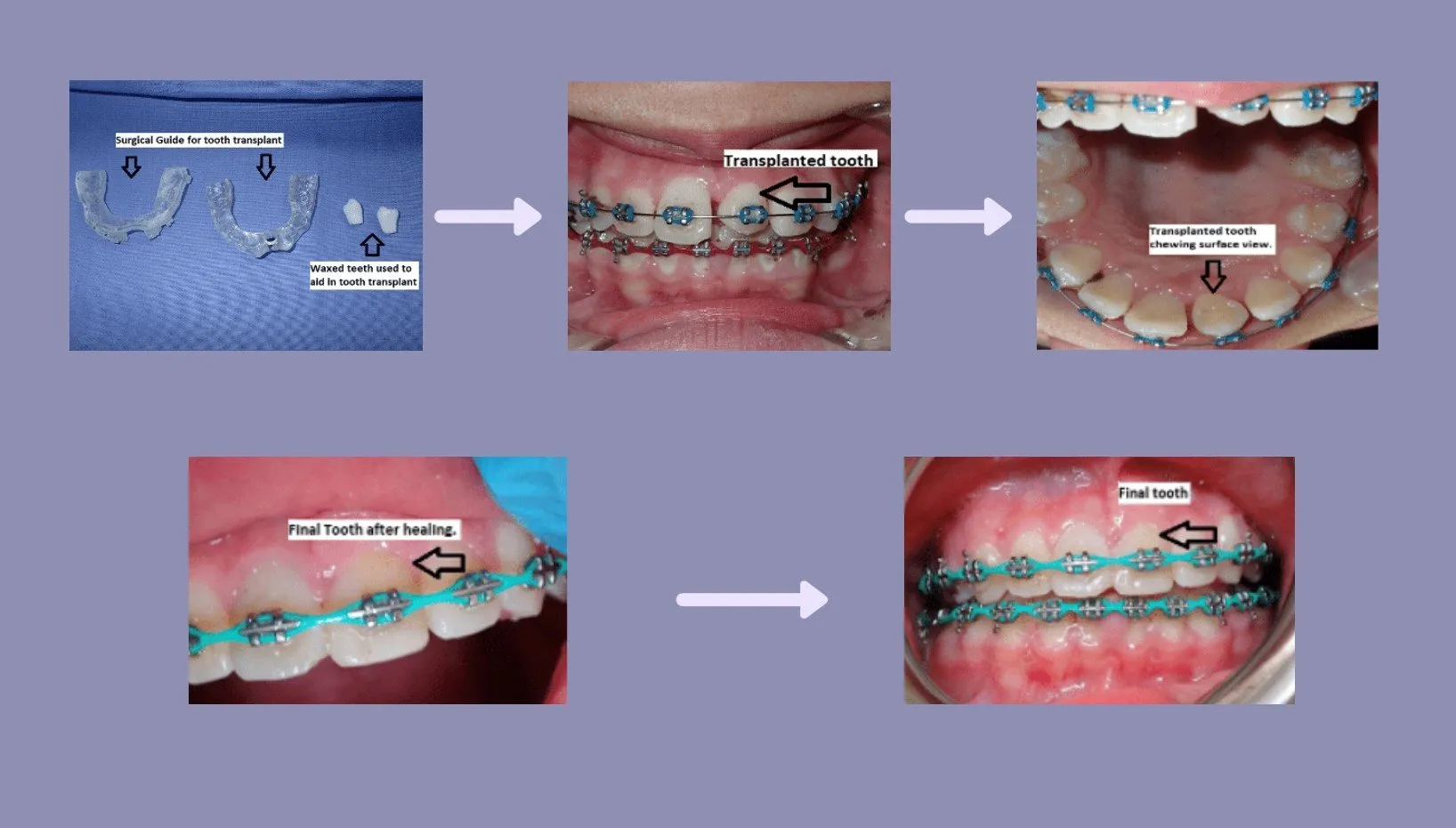

Pre-surgical orthodontics
The aim of pre-surgical orthodontics is to plan the treatment of the malocclusion and to prepare adequate space in the recipient site before the surgical procedure. This may involve having fixed or removable appliances for a few months before the transplant is done.
Tooth transplant surgery
The classical tooth transplant technique involves the extraction of the donor tooth and preparation of the recipient site using the donor tooth as a template. The use of a surgical template has been proposed to minimise extra-alveolar time for the donor tooth. The recipient site is accurately contoured to ensure good blood supply to promote revascularization after tooth transplant. Donor tooth is carefully extracted then placed into the prepared socket and sutured in place.
Post-surgical treatment
Post-surgical treatment involves post-surgical orthodontics and restorations. Post-surgical orthodontics is required to straighten the teeth and achieve the final positioning of the transplanted tooth before definitive restoration. It also provides an additional advantage in the first few months to keep the transplanted tooth free from occlusal trauma. In some cases, endodontic treatment is indicated, but the timing of endodontic treatment is debated in the literature. Restorative work is carried out to improve the appearance of the transplanted tooth. Composite is used either as a temporary or definitive restoration. Partial porcelain veneer can be used as a definitive restoration to match the shape and shade of the natural tooth.
